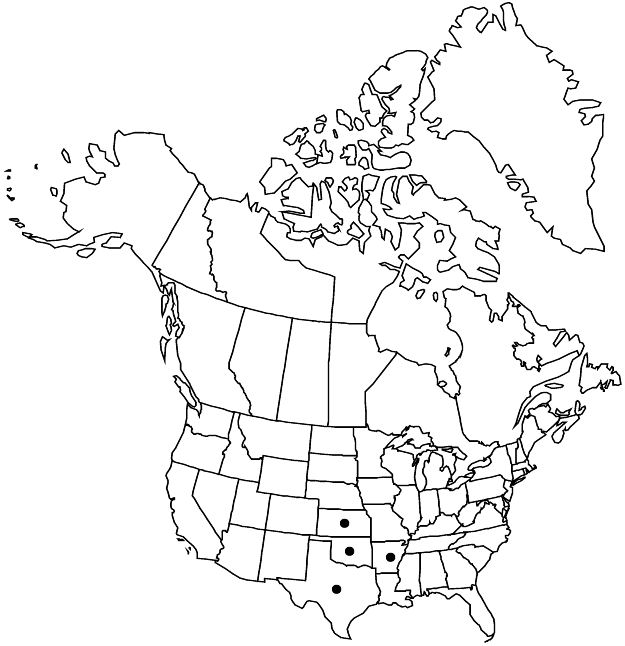Crataegus viridis var. glabriuscula
Novon 16: 386. 2006.
Stems: trunk bark whitish, exfoliating, smooth; compound thorns on trunks sometimes present; 1-year old twigs tan to reddish brown. Leaves: blade ± orbiculate to narrowly ovate, oblong, rhombic-elliptic, or narrowly obovate, 2–4 cm, thin to chartaceous, base cuneate, lobes 0, or 1 or 2 per side, if present, very short, lobe apices acute, margins usually sharply serrate, teeth 1.5–2 mm, venation craspedodromous, veins 3(or 4) per side, apex acute to obtuse, surfaces glabrous except abaxially with tufts of hair in vein axils, adaxially short-pubescent young, glabrescent. Inflorescences 3–12-flowered; branches glabrous. Flowers: hypanthium glabrous.
Phenology: Flowering Apr; fruiting Sep–Nov.
Habitat: Rich moist soil near streams, blackland soil
Elevation: 10–200 m
Distribution

Ark., Kans., Okla., Tex.
Discussion
Variety glabriuscula is common in the eastern half of Texas and Oklahoma and extends to southeastern Kansas, to western Arkansas, possibly to Louisiana, and probably to southern Missouri.
Variety glabriuscula is weakly distinguished in the north of its range from var. viridis because of intermediates such as Crataegus furcata Sargent and C. lutensis Sargent [= C. viridis var. lutensis (Sargent) E. J. Palmer]. The variety is also somewhat distinguished by smaller leaves from forms of var. ovata, which, however, are almost perfectly allopatric. The mature bark of some specimens is described as the smoothest of the viridis group, near white, with finely exfoliating large flakes. Bark characteristics (and habitat) are also credited with helping to distinguish C. blanda (see under var. ovata). Variety glabriuscula represents a distinct southwestern regional variant of the species.
Specimens with fruit diameter in the 8–10 mm range sometimes found in the Dallas area may be hybrids with Crataegus reverchonii. The rare C. desertorum Sargent, known from Bandera and Uvalde counties, Texas, is distinguished by the scrubbier nature of the plant, zigzag twigs, greater thorniness, frequently ovate leaves that are distinctly and bluntly lobed, persistent, dense pubescence on the petioles, and semipersistent pilosity on the abaxial leaf surface.
Selected References
None.